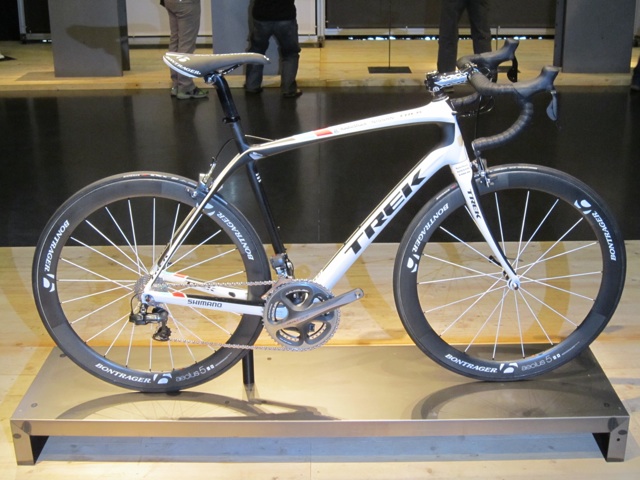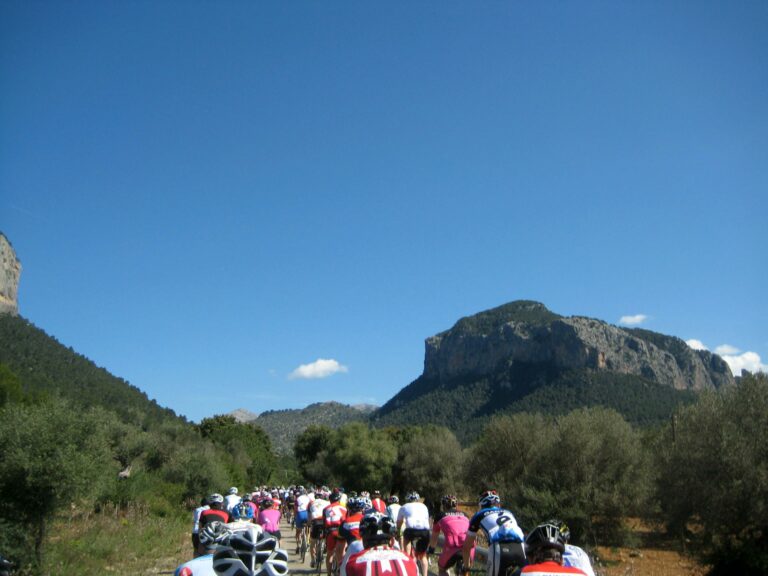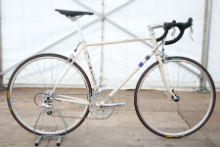Trek’s new Domane road bike is not designed for comfort. No way; it is, instead, intended for the “endurance road” scene, for which the Wisconsin firm has come up with the concept of “less in, more out”.
This, says Trek, was arrived at through a development process that drew heavily on the input of RadioShack-Nissan talisman Fabian Cancellara, who gave the Domane a winning race debut at the Strade Bianche back in early March 2012.

Sadly, the Swiss ace crashed out of the Tour of Flanders, at which the bike was expected to offer a significant advantage over more conventional machinery. What makes the Domane unconventional is the mechanism it employs to isolate the saddle from low-frequency road vibration – the sort known to compromise ride comfort most effectively. Named IsoSpeed, the mechanism connects the seat tube to the seat stay/top tube junction using a pair of cartridge bearings set into the outsides of the stays. The seat tube, which simply sits between the two stays at this point, has a lug moulded to the front surface through which passes a bolt locating the lug co-axially with the bearings in the seat stays.
Cut through the seat tube below the lug and it pivots on the bearings. Since it is moulded to the bottom bracket in the usual way, the effect is to allow a tiny amount of rotational movement when downward load is applied to the saddle. This tries to make the seat mast – of the same design as the “Ride-Tuned” mast on the Madone – rotate backwards around the bearing. The degree to which it can do so is limited by the stiffness of the seat tube, which bows forward under the bearing as the mast is loaded. The rubber moulding set between the stays and seat tube is designed to keep dirt and grit away from the tight space between them and has no other function.
Chosen, according to Trek, after assessing a number of options, the design offers an inherent limit to saddle movement. In theory it is “tuneable” by varying the stiffness of the seat tube, but Trek says there is no need since the range of movement is small and the increase in resistance to bending increases rapidly.
Turning to the front end, Trek’s engineers softened the fork by increased the curvature of the blades to permit increased flex, preserving rake by hanging the dropouts below the blade tips. Fork rake is, in fact, greater than that on the Madone despite the lowered dropouts. The fork, named IsoZone, is intended to work in tandem with Bontrager IsoZone handlebars, also unveiled at the Domane launch, to reduce the amount of vibration finding its way to the rider’s hands. The Bontrager bars feature closed-cell foam padding that sits on recesses to retain standard grip dimensions.
Further improvements to ride quality were found by tweaking frame geometry to promote stability; compared to the Madone, wheelbase is longer, the seat angle is steeper, the bottom bracket is lower and the head angle shallower. The whole bundle goes under the label “Endurance Geometry”.
In “fit” terms, the Domane sits between the Madone’s H2 and H3 fits, with a short reach and around 5mm higher minimum stem height than the H2. This posed a few problems when setting up a bike for the test ride, but a 14cm stem – in place of the 12cm preferred for an H2 Madone – put the bars close to where they were wanted. The saddle is mounted on the standard Madone-style seat mast, which is available in several lengths and clamp offsets to permit preferred saddle positioning.
First ride sensations are impressive; decoupled from the saddle, the frame is exceptionally stiff and effective at power transfer while the IsoSpeed system itself is notably softer than a conventional set-up. Its effectiveness over pave is hard to determine without back-to-back comparison, but on broken tarmac and the kinds of rough road surfaces encountered by most cyclists it works so well that the IsoZone fork and bars, superior to most front ends though they may be, feel stiff and unyielding by comparison. But, overall, the Domane is both pleasant and rewarding to ride.
Currently available through Trek’s Project One site, the Domane is offered in two models: the 6 Series Team Edition at £8290 and the “custom” 6 Series.





